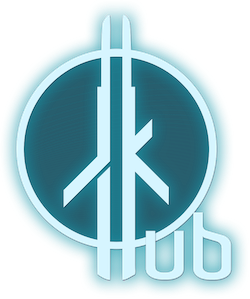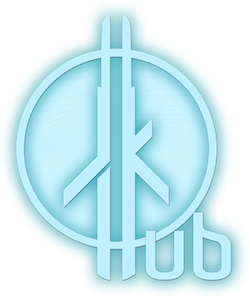-
Posts
1,620 -
Joined
-
Last visited
Content Type
News Articles
Tutorials
Forums
Downloads
Posts posted by mrwonko
-
-
The importer only supports one .skin file at a time, and it does not auto-hide surfaces marked as "*off". You'll have to manually combine the .skin files into a single one, and then manually hide/remove all undesired surfaces.
-
Yeah, apparently time.clock was removed in Python 3.8 and Blender must have updated to that version (or newer) now. The add-on needs to be adjusted accordingly. I hate it when programming languages just randomly decide to break your program in a new version...
bigphil2695 likes this -
I currently do not see the connection between the title of this thread and your message. Please describe in more detail what steps you have performed. How do you merge glas?
-
No, you cannot change the lightmap using entity modding. The only way to get rid of it is to use a fullbright shader that ignores the lightmap, but a) that's going to look terrible and b) there probably aren't any existing fullbright shaders for the textures you want to use, and you cannot add new shaders through entity modding.
-
I don't know of any, and if there were any, I wouldn't want to use them. I appreciate the Discord having different channels I can mute individually, to recreate that with telegram you'd need dozens of chats that people have to join individually.
Just fix your Discord?
-
Check the manual, you need to unpack models/players/_humanoid/_humanoid.gla and either have the files in GameData/Base or manually configure the base path on import.
-
Does the underwater fog still work? I assume the blue character is related to that somehow, since it's also blue.
bespin/water2 has fogparms configured to give it that blue fog, while caulk_water does not configure any fog, so I'm not sure which takes precedence when you mix both on a brush.
-
Yes, it's a known bug in 1.4 that the native save dialog is broken since Vista or so, and the other one requires you to manually add the extension. But I fixed that in 1.6, which to my knowledge is no less stable than 1.4.
However, nowadays many mappers swear by NetRadiant Custom (NRC).
jedimaster123 likes this -
See https://jkhub.org/tutorials/general-modding/installing-editing-and-managing-pk3s-r73/, but remember to never edit the existing assets files, and instead put your modifications into a separate pk3 archive.
Smoo likes this -
"Extracted" makes it sound like you downloaded a zip. Please learn to use Git instead, so that you can keep track of your changes better, and undo them if necessary.
Yes, I was talking about the name of jk2gamex86.dll. That sounds like the correct one, don't change it.
x86 means 32 bit. To use a 32 bit/x86 jk2game dll, you need a matching version of OpenJO, I think the executable should be called something like openjosp.x86.exe (the x86 being the important bit), is that what you're using?
"Release" is okay, "Release With Debug Symbols" is better if you get something wrong and need to debug. You probably should not use "Debug", as it enables a lot of extra error checks, which tend to fail and interrupt your game with error messages about unrelated things.
Did you check the ingame logs with Developer 1 like I suggested?
-
Having your own folder for your mod is not a bad idea, it helps you stay organized, and if you can select it in the menu, you're probably doing it right. As far as I remember, dlls don't necessarily need to be in a pk3 to work, but it definitely doesn't hurt.
The most likely cause for a dll not being loaded is that it has the wrong name. Either because you renamed it yourself (then undo that), put it in the wrong folder, or because you're trying to use a 32 bit mod with a 64 bit engine or vice-versa, in which case you need to compile the correct version instead.
Once the file has the right name, the ingame log should contain more information about whether it's being used, especially when you set developer 1.
-
Quote
Just verbalizing it a little got the brain gears working to finally find it.
Ah, good old Rubber Duck Debugging.
Looks like the datapad was still work in progress in JK2 and then they finished it for JKA. I wonder how many other unused and/or unfinished assets are included with the games...
-
You must have some kind of (asset) mod that changes the datapad, it looks like it's using a different texture. I'd be surprised if this was in any way connect to OJK or JAE. Have you tried removing all PK3s and loose files except the original assets?
-
As it says, try running the game using a command line interface. Right-click the folder containing the executable, "Open in Terminal" and enter the name of the executable. You should then be able to see a more detailed error message.
Smoo likes this -
For animations, you can also do a lot with shaders! By overlaying up to eight layers, you can mask out areas, have moving/pulsing images, and do all kinds of neat things. As far as I know, shaders should work the same in menus as they do in maps.
I think 4096x4096 is the largest texture size I've heard of people using successfully, and there shouldn't be much need to go further.
Good luck!
STOIK likes this -
The menus use a virtual 640x480 canvas that gets stretched to whatever resolution the user is actually using. So to always look correct, you need one version of the menu for each aspect ratio. But I think you can do the image squishing in the .menu file, you don't need to squish the texture itself?
A menu editor is high on my priority list, but I don't know when I'll get around to it.
Kitsu-NeshKaa, STOIK, Bubbles and 1 other like this -
In Jedi Outcast, the surface is disabled in the .glm file and then turned on using the npcs.cfg file.
In Jedi Academy, the .glm typically has all surfaces enabled, and then selectively disables them using the .skin file. I suspect there is no way to turn them on using only the .skin file, you'll likely need to modify the .glm.
So download the latest version of the Blender tools from Github, import the .glm (refer to the manual for the required folder structure so it can find the corresponding .gla), go into the object properties of each hidden surface, find the Ghoul 2 Properties and untick the "off" checkbox, then re-export the .glm.
RobiWanKen0bi likes this -
I don't see "TORSO_COLLAR_OFF" anywhere in the code you posted, I wonder how it ends up in the error message. Can you post the full NPC definition?
SomaZ likes this -
Like I said, use surfOn. I don't see it in that npc you posted.
-
The relevant surfaces are torso_galaktorso_off, torso_collar_off, torso_galakface_off, torso_eyes_mouth_off & torso_galakhead_off, as you can check via ModView from the SDK.
In Jedi Academy, surfaces get disabled via the .skin file, but apparently Jedi Outcast uses ext_data/npcs.cfg instead. Here's an excerpt of the Stromtrooper Officer:
STOfficer { playerModel stormtrooper surfOn torso_pauldron_off surfOff "torso_armor_neck_augment torso_body_neck_augment"
It uses the "surfOn" and "surfOff" settings to enable the pauldron. You should be able to similarly enable the missing Galak surfaces.
-
Are you trying to make a serverside-only modification or do you plan to redistribute your modified bsp?
-
No need for a deathscript, NPCs should use their npc_target upon death, so you can directly connect them to the target_count without any scripting.
mjt likes this -
Who executes this script? How is it triggered?
-
You must be using an outdated version of the exporter, I get the following error:
QuoteObjects "*hip_bl_0" and "*hip_bl_0.001" share G2 name "*hip_bl"
Furthermore:
QuoteObjects "*hip_bl_0.002" and "*hip_bl_0" share G2 name "*hip_bl"
After I fix those two issues, in-game I get the much more reasonable error
Quotemodel.glm has more than 1000 verts on a surface (1442)
Though it sadly does not tell us which surface.
Grab the latest version at https://github.com/mrwonko/Blender-Jedi-Academy-Tools/releases/tag/nightly and see if that gives you clearer error messages. Let me know if anything is unclear.




Limb Caps Issue
in Modding Assistance
Posted
In the Ghoul 2 properties, I don't think the name is supposed to end in _0. Compare that one to a working model to check. Usually the _0, _1 etc. suffixes are only there to disambiguate the objects, but all LODs have the same G2 name with no LOD suffix.